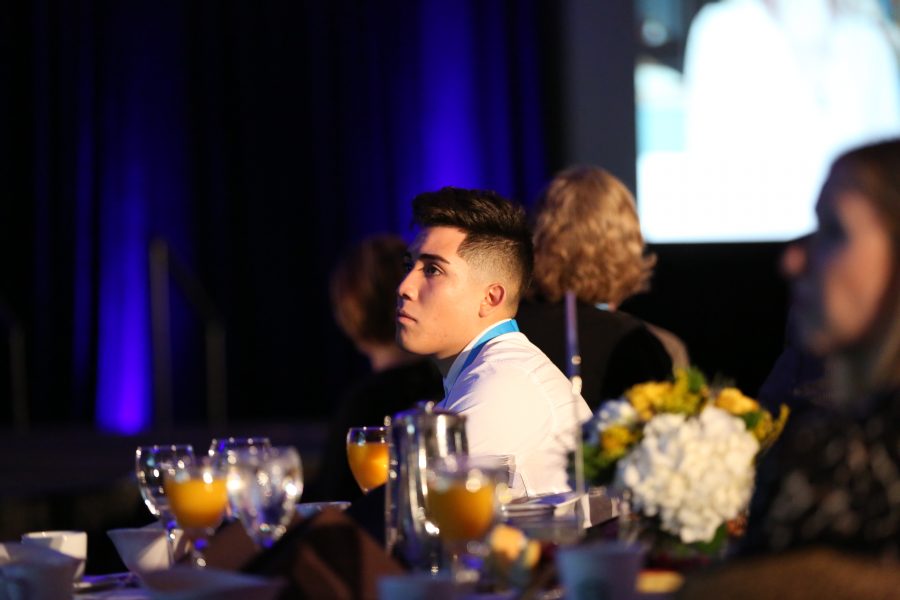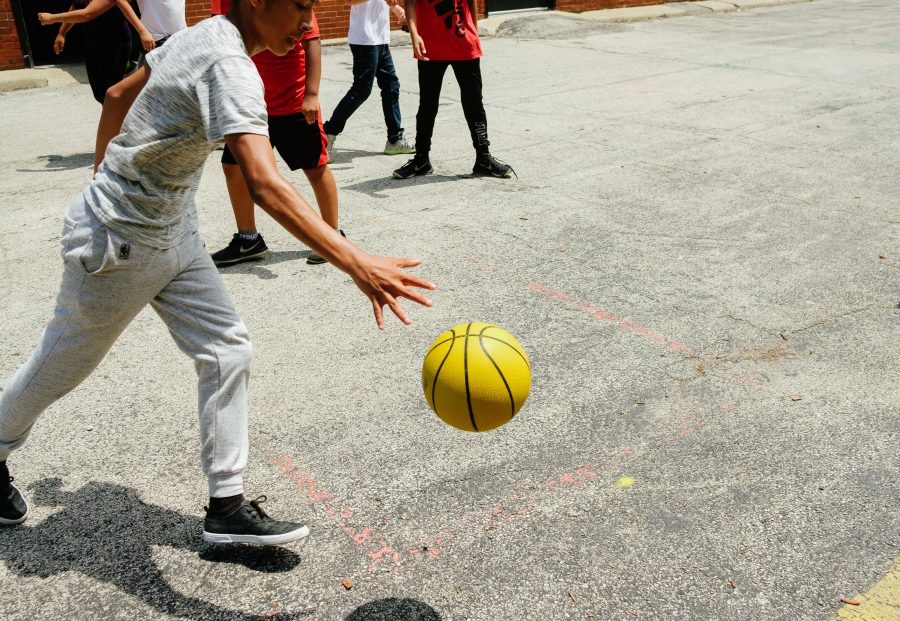Learner Connected
Learning transcends location in relevant and valued ways, connected to families, educators, communities, and networks.
40%
increase in high school graduation rate among high school students enrolled in a community-based support program.
*Oreopoulos et al. (2014) Pathways to Education: An Integrated Approach to Helping At-Risk high School Students”. National Bureau of Economic Research working paper 20430.
How Do Learner Connected Experiences Help Students?
Real-world connections lead to new opportunities and bridges that enable students to grow social capital and develop lifelong skills in personal, social, and civic engagement. In an unprecedentedly connected world that is driven by relationships and constant, immediate learning, schools can help students learn to thrive and advance.

The Guidelines of a Learner Connected Experience
Learners collaborate with peers, family, educators, and others.
Create projects and activities that require family and caregiver participation.
Show Example
Example: A teacher creates an at-home, place-based project in which the learner must collaborate with caregivers to identify an issue and design a solution.
Show Strategy
Leverage internet-based tools that enable synchronous school-home sharing of learning, data, and progress.
Show Example
Example: A teacher uses a digital ePortfolio platform with parent access to have learners capture their experiences, progress, and performance on a daily basis, sparking new conversations between home and school.
Show Strategy
Work with parents and caregivers to ensure that the learner has the supports and opportunities needed for learning.
Show Example
Example: A teacher meets with parents a few weeks prior to school to discuss the learner’s needs across all aspects of Learner Focused and collaborates with school staff and third-party organizations to connect the family to a custom suite of support for the learner.
Show Strategy
Regularly re-sort teams based on diversity, choice, and interests.
Show Example
Example: A teacher changes the grouping strategy for every project throughout the year to avoid unintentional tracking and increase how well learners know each other.
Show Strategy
Set up expectations and support for the development of “team” skills (e.g. negotiation, conflict resolution, giving and receiving feedback, assertion).
Show Example
Example: A teacher shares a formal rubric of team skills that teammates on a project then use to score each other for formative feedback.
Show Strategy
Learners cultivate meaningful relationships.
Establish a daily journal or reflective practice that is shared with parents and teachers.
Show Example
Example: A teacher has all learners complete a daily reflection that is shared through an online platform with their families and the teacher.
Show Strategy
Develop planning templates for learner, family, and community-initiated experiences that specify how to interact with other networks.
Show Example
Example: A teacher creates a guided template to scaffold the process of reaching out to family members and contacts for support on a project.
Show Strategy
Hold community meetings across the school to celebrate and share.
Show Example
Example: The art department runs monthly gallery walks for the entire school to see each other’s work and provide feedback to each other.
Show Strategy
Create zones of safety that provide scaffolding for pursuing new relationships and opportunities.
Show Example
Example: A teacher mentors a learner through the process of contacting a company for an internship and pursuing the opportunity, offering constructive feedback along the way.
Show Strategy
Create safe communities of practice for peers dealing with the same issues to provide support to one another.
Show Example
Example: A teacher creates a community of practice consisting of learners who have younger siblings for them to discuss and share experiences as older brothers and sisters.
Show Strategy
Learners advance opportunities through connections.
Provide an online database of sites and partners to learners to enable self-discovery and proactive habits.
Show Example
Example: Teachers in the department actively curate a list of local and national partners aligned with their curriculum which is shared with learners.
Show Strategy
Develop rubrics to guide habits and reflection of social intelligence.
Show Example
Example: A team of teachers co-develop a rubric for expected social and empathy skills that learners are assessed and coached on regularly.
Show Strategy
Connect learners to social networks of peers and others with shared interest (affinity groups).
Show Example
Example: A teacher connects an interested learner to a trusted neighborhood group focused on urban planning.
Show Strategy
Model skills to locate and manage social connections and proper responses in the professional world.
Show Example
Example: A teacher incorporates lessons on professional networking to learners prior to the start of a cross-school collaboration project.
Show Strategy
Integrate interviews and other workplace habits and protocols into regular class habits.
Show Example
Example: A teacher designs a team-based project and has learners interview to be part of different teams instead of being automatically assigned.
Show Strategy
Learners engage in real-world experiences to develop:
- Academic skills and knowledge
- Community and civic engagement
- Workplace experience
Establish public blogs for sharing of learner work to an expanded audience.
Show Example
Example: A teacher creates and co-manages a single classroom blog that showcases outstanding learner work with parents and the public.
Show Strategy
Help learners plan experiences that reflect and expand their personal identities, values, and family backgrounds.
Show Example
Example: A teacher helps a student who is a recent immigrant get involved with different cultural activities around the community.
Show Strategy
Create forums for public performances and authentic final products.
Show Example
Example: Teachers guide learners through “problem-based” projects that produce solutions for needs in their neighborhood.
Show Strategy
Include working professionals as advisors or establish an advisory committee on the overall curriculum.
Show Example
Example: Teachers partner with parents who are healthcare professionals to inform their STEM curriculum.
Show Strategy
Co-design opportunities with learners for advocacy and independent study in the workplace, community, and online.
Show Example
Example: Teachers partner with advocacy groups and connect learners with those that match their interests.
Show Strategy
Learners earn valued recognition for all learning, regardless of where and when it happens.
Hold public, community-wide gallery walks or themed expos for authentic presentation of work beyond the classroom.
Show Example
Example: At the end of each semester, a summit is held at the local town hall for learners to present developed, new business ideas to local leaders and the public.
Show Strategy
Leverage an online portfolio system for formalized documentation of learners’ artifacts and experiences.
Show Example
Example: Teachers across the grade use an online ePortfolio system to have learners capture all work and share it across teachers and with their parents.
Show Strategy
Expand dual-enrollment and credit programs with partner institutions and third-party organizations.
Show Example
Example: Teachers formalize dual-credit options with the local community college and professional organizations to help students build their college transcripts.
Show Strategy
Work directly with outside mentors and experts to identify measurable criteria and how they can be demonstrated.
Show Example
Example: Teachers converse with engineers from a local firm/factory to identify key skills and co-develop how they can be appropriately assessed at the fifth-grade level.
Show Strategy
Identify target skills and how gains will be validated.
Show Example
Example: A team of grade-level teachers co-develops a scope of target skills and protocols for assessment and validation during the year.
Show Strategy
What Does the Research Say?
When group learning is supported, it can be a powerful way to promote social-emotional skills and improve achievement in academic subjects, with the strongest gains seen in math and science. Cooperative learning relies on effective teamwork and a solid base of
knowledge.1
A sense of belonging at school and strong relationships with teachers strongly predicts improved learning outcomes—learners can do more when they have more people whose support, ideas, or networks they can rely on.2
There are promising models that help students build social capital by developing mentor relationships and professional connections outside school.3
knowledge.1
A sense of belonging at school and strong relationships with teachers strongly predicts improved learning outcomes—learners can do more when they have more people whose support, ideas, or networks they can rely on.2
There are promising models that help students build social capital by developing mentor relationships and professional connections outside school.3

1. Learner Connected Guideline #1
Learners collaborate with peers, family, educators, and others
2. Learner Connected Guideline #2
Learners cultivate meaningful relationships
3. Learner Connected Guideline #3
Learners advance opportunities through connections
